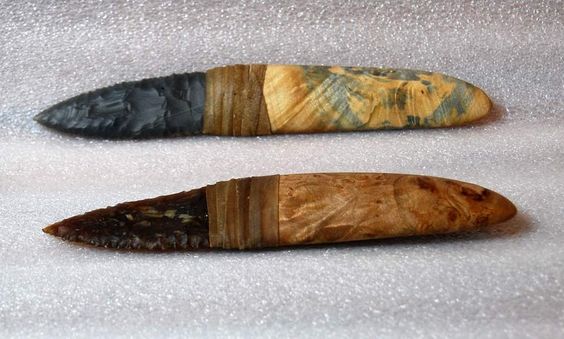Tools have shaped human history. Flint knives are notable. The flint knife’s keen edges and ancient origins shaped human civilisation. This page will explain what a flint knife is, its history, construction, and applications, and its relevance today.
What Is a Flint Knife?
Flint, a sedimentary rock with conchoidal fracture, makes flint knives. It was one of the first tools humanity produced and has served many uses. Knives were manufactured from flint because it could sharpen when struck against hard objects.
The Construction of Flint Knives

Flint knapping creates knives. Striking the flint rock carefully creates sharp flakes and shapes them into a sword. Flint knife making:
Material Selection: Selecting a flint material is the first stage in making a knife. Flint is a sedimentary rock with conchoidal fracture, which splits into sharp, curving fragments when struck. If available and desirable, chert or obsidian can also be used.
Preparation: Selecting flint material requires preparation for knapping. Removing outer layers and cortex helps create crisp flakes.
Platform Preparation: Next, build a platform on the flint. The knapper strikes flakes from the flint’s platform. To regulate flake removal, shape and prepare this platform.
Striking: After preparing the platform, the knapper strikes it with a percussor like an antler billet or hammerstone. The percussor breaks the flint and detaches flakes.
Flake Removal: The knapper meticulously removes flakes from the flint to shape and sharpen the blade. A symmetrical and effective blade takes skill and precision.
Finishing: After achieving the proper shape and edges, the flint knife can be finished. Pressure flaking creates finer flakes and refines the blade.
Hafting: Attaching the flint blade to a handle or shaft. Ancient handles were constructed of wood, bone, or antler. Sinew or plant fibres would connect the blade to the handle.
Historical Significance of Flint Knives

Flint knives date back to the Stone Age. Our predecessors survived with primitive tools. Flint knives were necessary for hunting, food preparation, and toolmaking. These knives were useful for chopping meat and skin and a variety of other chores.
Flint knives also changed agriculture, a major event in human history. Crop cultivation and animal domestication began in the Neolithic period. Flint knives helped clear land, gather food, and process animals in this essential endeavour.
These extraordinary gadgets advanced early agriculture and laid the groundwork for future developments.
Uses of Flint Knives

Hunting and Butchering: Flint knives allowed hunters to quickly skin and prepare wildlife for food because to their sharpness and durability.
workmanship: Flint knives were used for practical purposes and complex art and workmanship. Using intricate handles and carved motifs, skilled craftspeople made flint knives.
Everyday Use: Flint knives have many uses besides hunting and crafting. They helped chop plants, timber, and textiles. Flint knives helped make other tools, which advanced technology.
Modern Relevance of Flint Knives

In some fields, flint knives are still useful. Flint knives have numerous uses:
Survival Skills: Flint knives’ dependability and adaptability appeal to survivalists and outdoor enthusiasts. Emergency and outdoor survival circumstances require these knives due to their sharpness and durability.
Primitive Skills Education: Many people interested in primitive skills and old craftsmanship study flint knapping and knife use. These ancient methods let us understand our ancestors’ resourcefulness and creativity.
Collectibles and Artifacts: Flint knives are souvenirs and historical artefacts. Museums and collectors displayflint knives to remember our past. These artefacts reveal ancient civilizations’ art and culture.
Questions (FAQs)
What materials made flint knives?
Flint was the main ingredient in flint knives. Different regions employed chert, obsidian, and other similar stones. These stones were available and hard enough to sharpen.
Did all ancient cultures utilise flint knives?
Ancient cultures worldwide employed flint knives. Flint knives were essential for Palaeolithic humans, Neolithic farmers, and beyond.
Flint knives lasted how long?
Flint knives have been used since the Stone Age. As civilizations advanced, metal tools supplanted them.
Exist flint knives today?
Archaeologists still find flint knives. Ancient settlements, burial sites, and caverns reveal them. Some flint knappers use traditional methods to make replica flint knives for collectors.
Flint knives: lawful or illegal?
Owning a replica or antique flint knife is usually permissible. However, check local laws before buying and using such gadgets, especially if they’re for practical use rather than exhibition or education.
Does flint outperform contemporary knives?
Flint knives are effective cutting instruments despite their lack of precision and durability. Sharp flint knives can do many jobs.
Conclusion
Finally, the flint knife shows our predecessors’ resourcefulness and creativity. The flint knife has played a major role in human history, from its Stone Age origins through its role in civilisation.
The flint knife’s simplicity and timeless charm still attract us, even though contemporary tools are more practical. The flint knife symbolises human resourcefulness as a survival tool, historical artefact, and window into the past.
